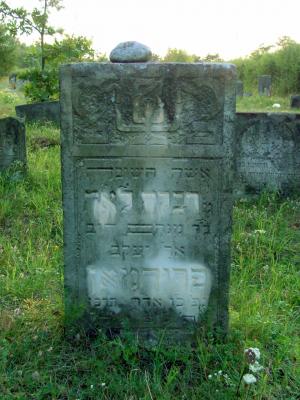Obj. ID: 13446
Jewish Funerary Art Jewish Cemetery in Góra Kalwaria, Poland

According to ESJF European Jewish Cemeteries Initiative, the cemetery is located approximately 1.6 km west of the city centre, between Zakalwaria, Budowlanych, and Wiejska Streets, and covers an irregularly shaped plot with an area of approximately 1.23 hectares. The cemetery was established at the beginning of the 19th century. The first mention of the cemetery’s existence was in the city’s budget for 1827–1832. The cemetery’s land was gradually expanded. It was fenced and there was a funeral house at the entrance. In 1866, Rabbi Yitzhak Meir Rothenberg Alter, the founder of the local Hasidic dynasty, first Gerrer Rebbe, and the author of the book “Chidusze ha-Rim,” was buried at the cemetery. An ohel covered with a hipped roof was erected over his grave. In 1905, Rabbi Yehuda Arie Lejb—the third Gerrer Rebbe and author of the book “Sfas Emes”—was buried in the ohel.
During World War II, the Germans shot Jews and Poles at the cemetery and buried their bodies there. The degradation of the cemetery began around this time. By order of the Germans, some tombstones were used to pave the square in the camp for Soviet prisoners. Some inhabitants of Góra Kalwaria and the surrounding villages also took part in the destruction of the cemetery. After 1945, thanks to the efforts of the Jewish Committee in Góra Kalwaria, a concrete pseudo-sarcophagus was built over the graves of the great rabbis, about 150 tombstones were placed in the cemetery, and the area was fenced. In 1989, the Nissenbaum Family Foundation constructed a concrete driveway to the cemetery and a new fence. A new ohel was built at the end of the 20th century. The owner of the cemetery is the Jewish Community in Warsaw and the facility is listed in the Register of Immovable Monuments of the Masovian Voivodeship (entry No. 1408, 09/02/1990).
ESJF field team discovered 360 tombstones standing in situ, 80 lying and 100 fragments, placed on wooden panels on the ground.

























